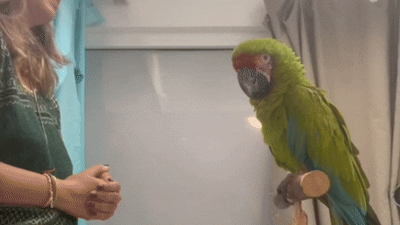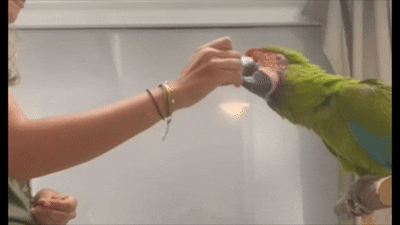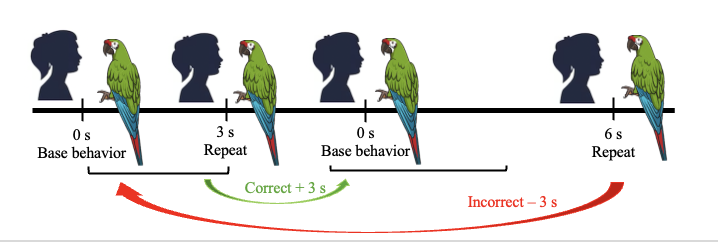Location: Max Planck Institute of Comparative Cognition research station in Loro Parque Fundación, Tenerife
Time: July to November 2024
Individuals: 8 individuals in total, 7 females and one male
Training
The individuals were trained on four out of these five base behaviors
a. Leg

b. Fluff

c. Spin

d. Bow

e. Vocalization

Later, they were trained on the “Repeat” command, where they had to repeat their previous behavior.
Testing
Phase 1. Single and double repeat trials
With a randomized list of commands, I commanded the birds to do base behaviors, “single repeats” (I commanded the repeat signal), and “double repeats” (I signalled the repeat command twice in a row).

Number of sessions: 6
Phase II. Delayed repeat
I commanded the birds to perform a base behavior and after, I would signal for a repeat command with a starting delay of 3 seconds. If they repeated the base behavior correctly, the delay in the next trials would be 3 seconds longer. If they repeated it incorrectly, the next delay would be 3 seconds shorter.

Number of sessions: 12
Data analysis
The results were later analyzed using the program R-studio. I ran separated Generalized Linear Mixed Models to check for significant differences between individual performances, single and double repeats, and delay time intervals,
Do you want to know what I found out? Check out the Results.